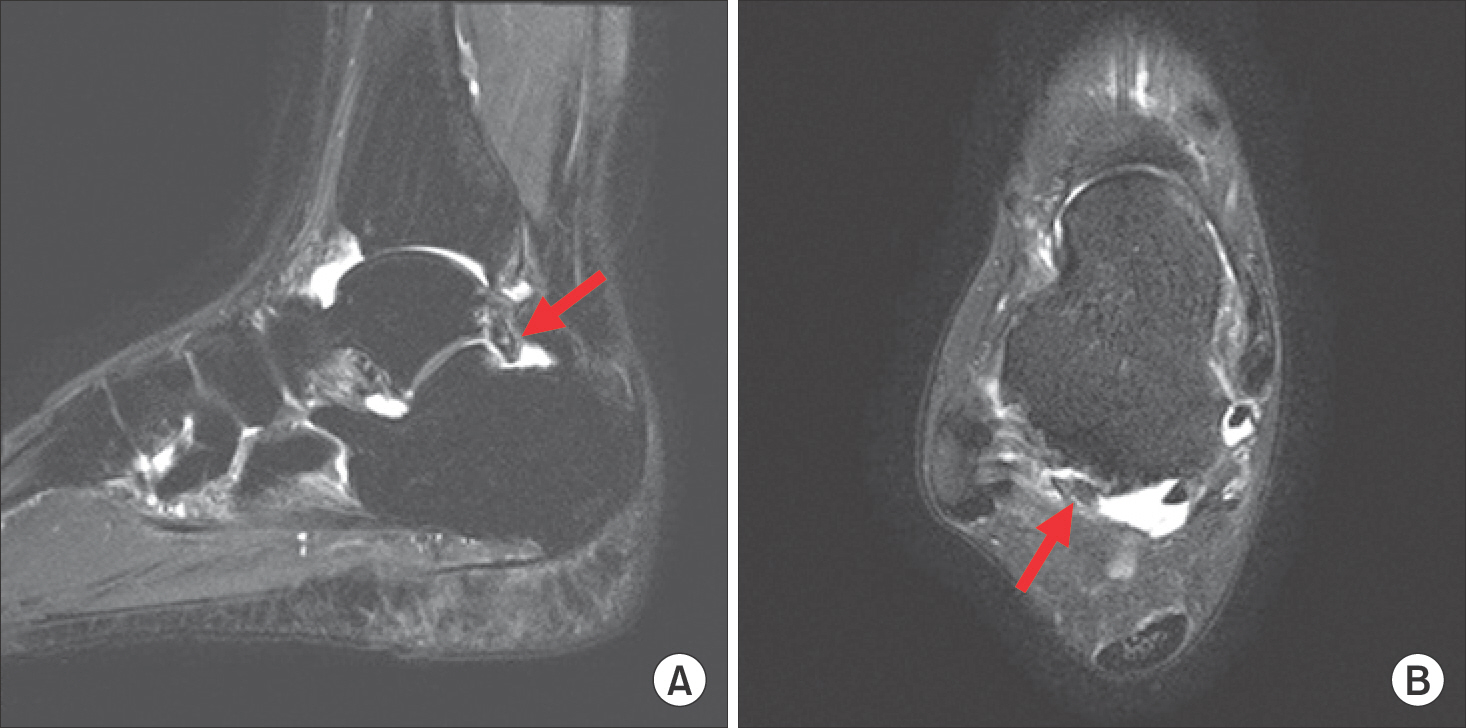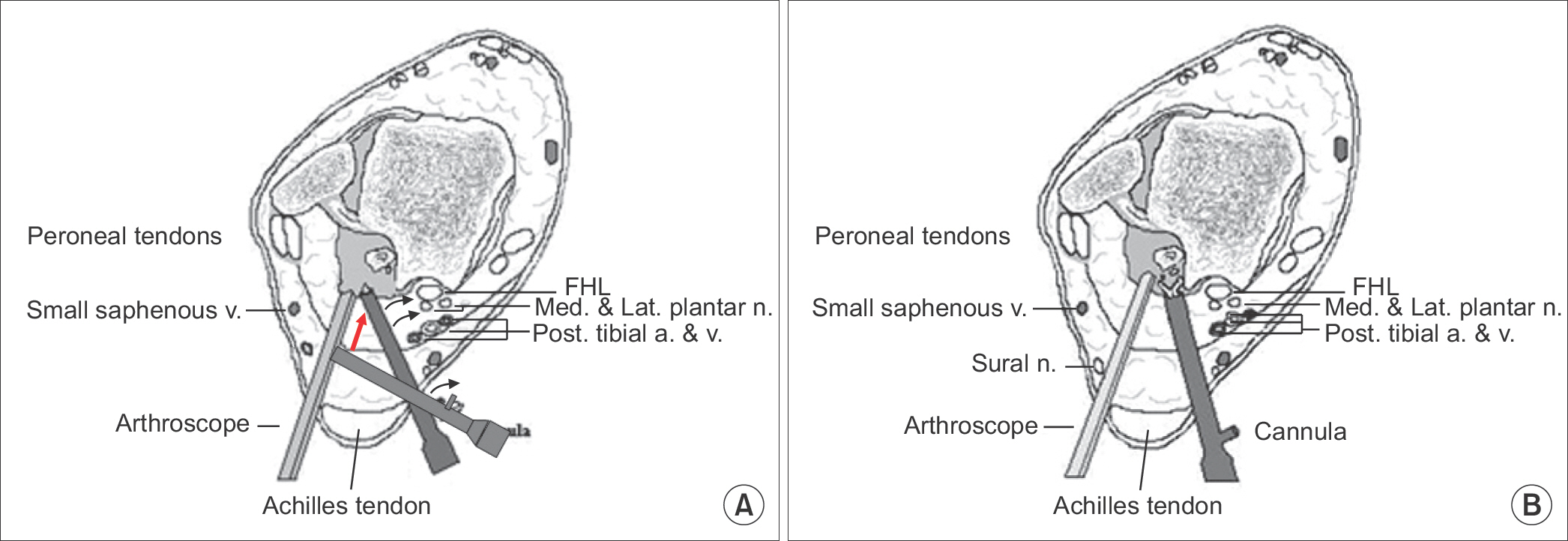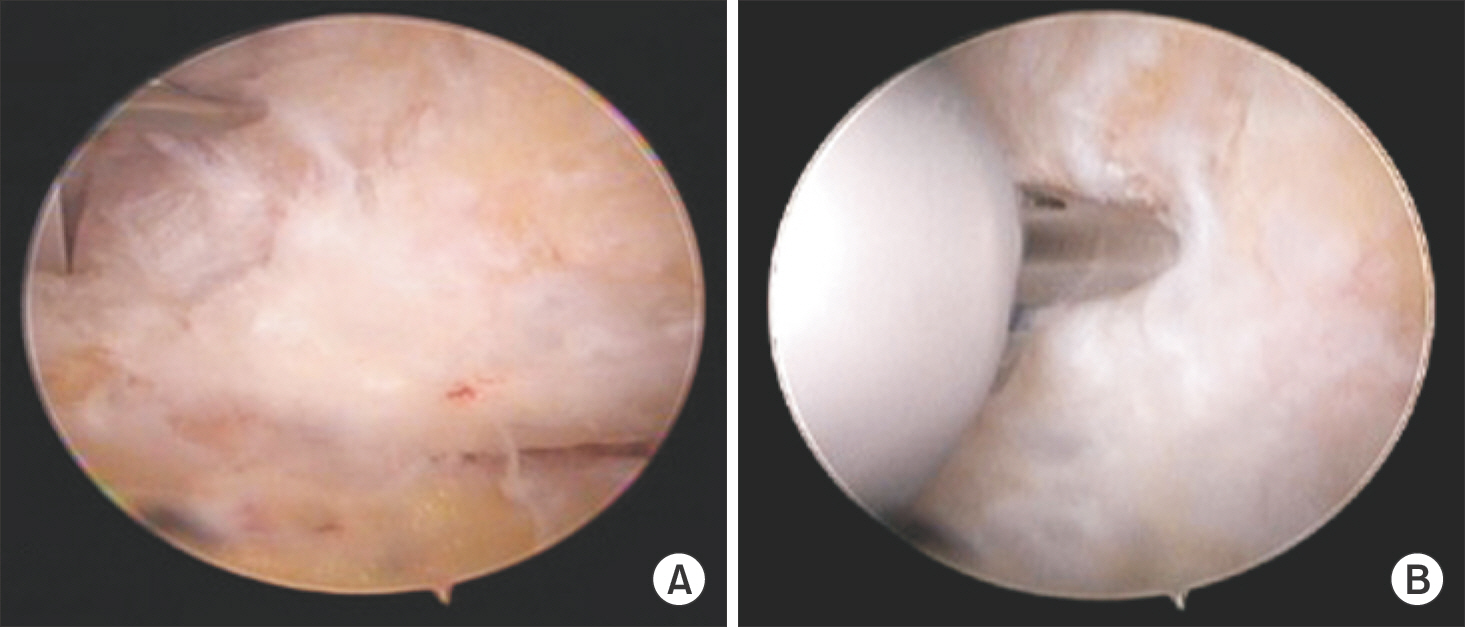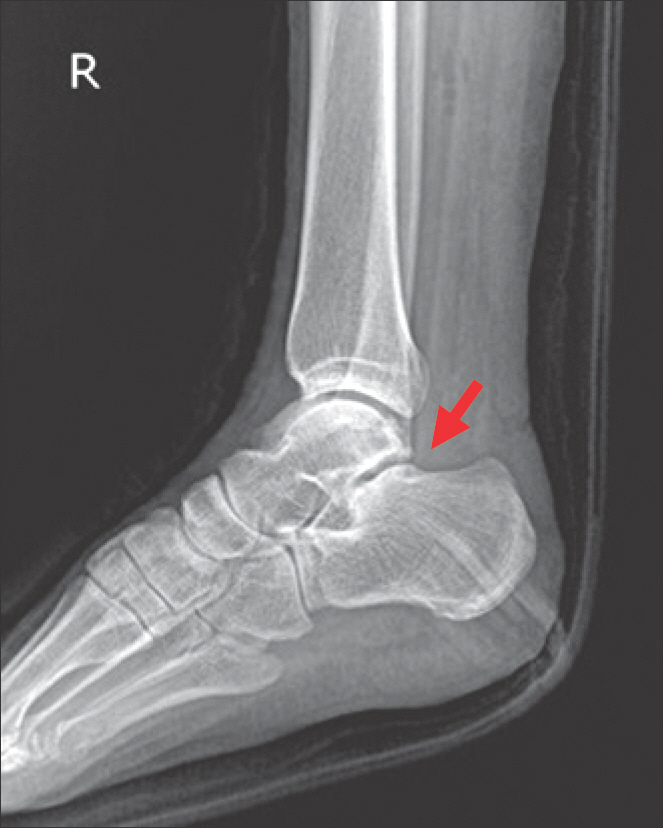J Korean Foot Ankle Soc.
2018 Mar;22(1):26-31. 10.14193/jkfas.2018.22.1.26.
Hindfoot Endoscopy for the Treatment of Posterior Ankle Impingement Syndrome: A Comparison of Two Methods (a Standard Method versus a Method Using a Protection Cannula)
- Affiliations
-
- 1Department of Orthopedic Surgery, Gwangmyeong Saeum Hospital, Gwangmyeong, Korea.
- 2Department of Orthopedic Surgery, Inje University Busan Paik Hospital, Busan, Korea. ortho1@hanmail.net
- 3Department of Orthopedic Surgery, Dongrae Bongseng Hospital, Busan, Korea.
- KMID: 2407372
- DOI: http://doi.org/10.14193/jkfas.2018.22.1.26
Abstract
- PURPOSE
The purpose of this study is to compare the clinical results between two different methods of hindfoot endoscopy to treat posterior ankle impingement syndrome.
MATERIALS AND METHODS
Between January 2008 and January 2014, 52 patients who underwent hindfoot endoscopy were retrospectively reviewed. Two methods of hindfoot endoscopy were used; Group A was treated according to van Dijk and colleagues' standard two-portal method, and group B was treated via the modified version of the above, using a protection cannula. For clinical comparison, the American Orthopaedic Foot and Ankle Society (AOFAS) hindfoot score, time required to return to activity, and the presence of complications were used.
RESULTS
There was no statistically significant difference in the AOFAS scores at the final follow-up, and there was also no statistically significant difference in the times for the scores to return to the preoperative level. There were no permanent neurovascular injuries and wound problems in either group.
CONCLUSION
Use of protection cannula may provide additional safety during hindfoot endoscopy. We could not prove whether protection cannula can provide superior safety for possible neurovascular injury. Considering the possible safety and risk of using additional instrument, the use of this method may be optional.
Keyword
MeSH Terms
Figure
Reference
-
1.Stone JW., Guhl JF. Diagnostic arthroscopy of the ankle. Andrews JR, Tinnerman LA, editors. editors.Diagnostic and operative arthroscopy. Philadelphia: WB Saunders;1997. p. 423–30.2.Jerosch J., Fadel M. Endoscopic resection of a symptomatic os trigonum. Knee Surg Sports Traumatol Arthrosc. 2006. 14:1188–93.
Article3.Golanó P., Vega J., Pérez-Carro L., Götzens V. Ankle anatomy for the arthroscopist. Part I: the portals. Foot Ankle Clin. 2006. 11:253–73.
Article4.Ferkel RD., Scranton PE Jr. Arthroscopy of the ankle and foot. J Bone Joint Surg Am. 1993. 75:1233–42.
Article5.Ferkel RD., Heath DD., Guhl JF. Neurological complications of ankle arthroscopy. Arthroscopy. 1996. 12:200–8.
Article6.van Dijk CN., Scholten PE., Krips R. A 2-portal endoscopic approach for diagnosis and treatment of posterior ankle pathology. Arthroscopy. 2000. 16:871–6.
Article7.Abramowitz Y., Wollstein R., Barzilay Y., London E., Matan Y., Sha-bat S, et al. Outcome of resection of a symptomatic os trigonum. J Bone Joint Surg Am. 2003. 85:1051–7.
Article8.Guo QW., Hu YL., Jiao C., Ao YF., Tian DX. Open versus endoscopic excision of a symptomatic os trigonum: a comparative study of 41 cases. Arthroscopy. 2010. 26:384–90.
Article9.van Dijk CN. Hindfoot endoscopy. Foot Ankle Clin. 2006. 11:391–414.
Article10.van Dijk CN. Hindfoot endoscopy for posterior ankle pain. Instr Course Lect. 2006. 55:545–54.
Article11.Acevedo JI., Busch MT., Ganey TM., Hutton WC., Ogden JA. Coaxial portals for posterior ankle arthroscopy: an anatomic study with clinical correlation on 29 patients. Arthroscopy. 2000. 16:836–42.






